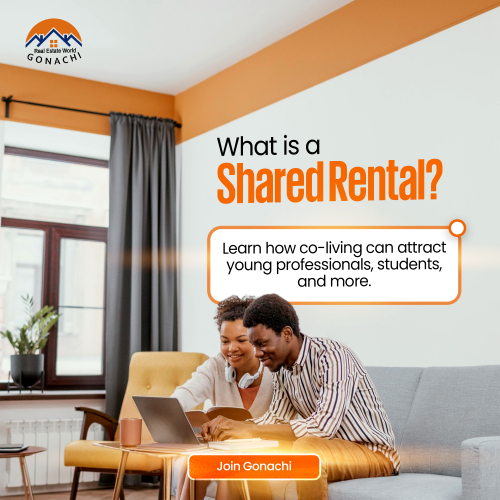Popup Title
...
Loading content...

A shared rental, also known as co-living, is an arrangement where multiple tenants live in the same property and share common spaces such as the kitchen, living room, and bathroom. This type of living arrangement has become increasingly popular, particularly among young professionals, students, and those looking for more affordable housing options. In a shared rental, each tenant usually has their own private bedroom while sharing the rest of the living space with other tenants.
There are several types of shared rental arrangements, each catering to different needs and preferences:
This is a common arrangement where two or more individuals agree to share a rental property. Each person typically has their own lease agreement with the landlord.
Similar to roommate agreements, house shares involve multiple tenants living in a single property. However, these arrangements often have one primary leaseholder who sublets rooms to other tenants.
Co-living is a more structured form of shared rental where properties are specifically designed to accommodate multiple tenants. These spaces often come with added amenities like cleaning services, community events, and shared workspaces.
Many universities and colleges offer shared rental options for students. These accommodations are usually located close to campus and provide a communal living experience.
In some cases, families or extended family members might share a larger rental property. This can be a cost-effective way to live in a desirable location while maintaining close family ties.
In a shared rental, the process typically begins with finding compatible roommates or housemates. This can be done through online platforms, referrals, or rental agencies. Once the tenants have agreed to live together, they sign a lease agreement that outlines the terms and conditions of the rental arrangement. This agreement may include details about rent, utilities, maintenance responsibilities, and house rules.
Rent is usually divided equally among the tenants, although some may pay more if they have a larger room or access to additional amenities. Utilities and other shared expenses are also split, either equally or based on usage. Communication and cooperation are key in a shared rental to ensure that everyone adheres to the agreed-upon terms and that any issues are resolved amicably.
Shared rentals come with several benefits that make them an attractive option for many:
One of the biggest advantages of shared rentals is the cost savings. By splitting rent and utilities, tenants can significantly reduce their living expenses.
Living with others provides opportunities for social interaction and can help build a sense of community. This can be especially beneficial for individuals new to an area.
In a shared rental, household chores and maintenance tasks are divided among the tenants, reducing the burden on any one individual.
Shared rentals often offer more flexible living arrangements compared to traditional leases. This can be ideal for those who need temporary housing or are not ready to commit to a long-term lease.
By pooling resources, tenants in a shared rental can afford properties with better amenities and in more desirable locations than they might be able to on their own.
Despite the many benefits, there are also some potential downsides to shared rentals:
Sharing living spaces with others can result in a lack of privacy. This can be challenging for individuals who value their personal space.
Living with roommates or housemates can lead to conflicts and disagreements over various issues, such as cleanliness, noise levels, and shared responsibilities.
Tenants in a shared rental may have different lifestyles and schedules, which can lead to friction. For example, early risers and night owls may struggle to coexist harmoniously.
If one tenant fails to pay their share of the rent or utilities, the remaining tenants may be held responsible for covering the shortfall.
In a shared rental, tenants may have less control over the living conditions and household rules compared to living alone.
Shared rentals offer a practical and cost-effective solution for many individuals seeking affordable housing. They provide numerous benefits, including cost savings, social interaction, and shared responsibilities. However, they also come with potential challenges, such as lack of privacy and conflicts among tenants. By carefully considering the pros and cons and finding compatible housemates, tenants can make the most of their shared rental experience. Platforms like Gonachi can further enhance this experience by providing tools and resources to connect tenants and landlords, ensuring a smooth and successful co-living arrangement.